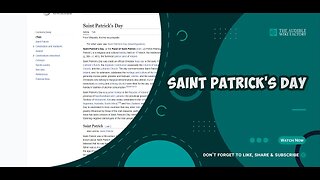The festival of San Fermín is a weeklong, historically rooted celebration held annually in the
The festival of San Fermín is a weeklong, historically rooted celebration held annually in the city of Pamplona, Navarre, in northern Spain. The celebrations start at noon on July 6 and continue until midnight on July 14. A firework starts off the celebrations and the popular song Pobre de mí is sung at the end. The most famous event is the running of the bulls, which begins at 8 in the morning from July 7 to 14, but the festival involves many other traditional and folkloric events. It is known locally as Sanfermines and is held in honour of Saint Fermin, the co-patron of Navarre.
Its events were central to the plot of The Sun Also Rises by Ernest Hemingway, which brought it to the general attention of the English-speaking world. It has become probably the most internationally renowned festival in Spain with over a million people coming to participate.
HISTORY
SAINT FERMÍN
Fermín is said to have been the son of a Roman of senatorial rank in Pamplona in the 3rd century, who was converted to Christianity by Saint Honestus, a disciple of Saint Saturninus. According to tradition, he was baptised by Saturninus (in Navarre also known as Saint Cernin) at the spot now known as the "Small Well of Saint Cernin" Fermín was ordained a priest in Toulouse, and returned to Pamplona as its first bishop. On a later preaching voyage, Fermín was dragged to death; and is now considered a martyr in the Catholic Church. It is believed he died on September 25, AD 303. There is no written record of veneration of the Saint in Pamplona until the 12th century. Saint Fermín, as well as Saint Francis Xavier, are now the two patrons of Navarre. In Pamplona, Saint Fermín is now sometimes said to have met his end by being dragged through the streets with angry bulls running after him, hence the tradition.
The celebration of the festival has its origin in the combination of two different medieval events. Commercial secular fairs were held at the beginning of the summer. As cattle merchants came into town with their animals, eventually bullfighting came to be organised as a part of the tradition. Specifically, they were first documented in the 14th century. On the other hand, religious ceremonies honouring the saint were held on October 10. However, in 1591 they were transferred to July 7 to take place at the same time as the fair, when Pamplona's weather is better. This is considered to be the beginning of the Sanfermines. During medieval times acts included an opening speech, musicians, tournaments, theatre, bullfights, dances or even fireworks. Bullrunning appears in 17th and 18th century chronicles together with the presence of foreigners and the first concerns about the excessive drinking and dissolute behaviour during the event. Finally, the Parade of Giants was created in the mid-19th century. The first official bullring was constructed in 1844.
LINK TO ARTICLE: http://en.wikipedia.org/wiki/Festival_of_San_Fermín
TAGS: Festival of San Fermín, Tourist attractions in Navarre, Navarre culture, July events, Patronal festivals in Spain
#GeneralKnowledge #AudibleWikiFactory #Audible #Wikipedia #FestivalofSanFermín
-
 34:34
34:34
The Audible Wiki Factory
1 year agoSaint Patrick's Day, or the Feast of Saint Patrick, is a religious and cultural holiday held on
726 -
 4:48:29
4:48:29
LumpyPotatoX2
10 hours ago$10,000 PUBG Tournament w/GamersError - #RumbleTakeover
47.2K12 -
 3:22
3:22
One Bite Pizza Reviews
2 days agoBarstool Pizza Review - Marco Pizzeria & Restaurant (Branford, CT)
50.5K24 -
 41:46
41:46
Standpoint with Gabe Groisman
15 hours agoEp. 27. From GameStop to the NBA. Gabe Plotkin
52.2K6 -
 55:04
55:04
Matt Kohrs
12 hours agoThe Volatile Week Ahead || The MK Show
65.7K23 -
 26:18
26:18
Stephen Gardner
11 hours agoTop Republican UNLOADS on Democrats and Biden's MENTAL HEALTH!!
77.4K111 -
 44:30
44:30
Michael Franzese
2 days agoCancel Culture Backlash of My UK Tour | Michael Franzese
138K50 -
 35:12
35:12
Island Hopper TV
1 day agoFull Costa Rica Travel Guide 2024
92.7K33 -
 4:43
4:43
ParisDemers
1 day agoThis Diet Hack Changed My Life! (How To Get Ripped FAST!)
97.8K31 -
 46:57
46:57
Crime Circus
1 day agoApple River ST*BBING!! Stand Your Ground Interrogation of Man in Wisconsin
98.6K46